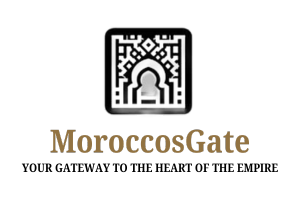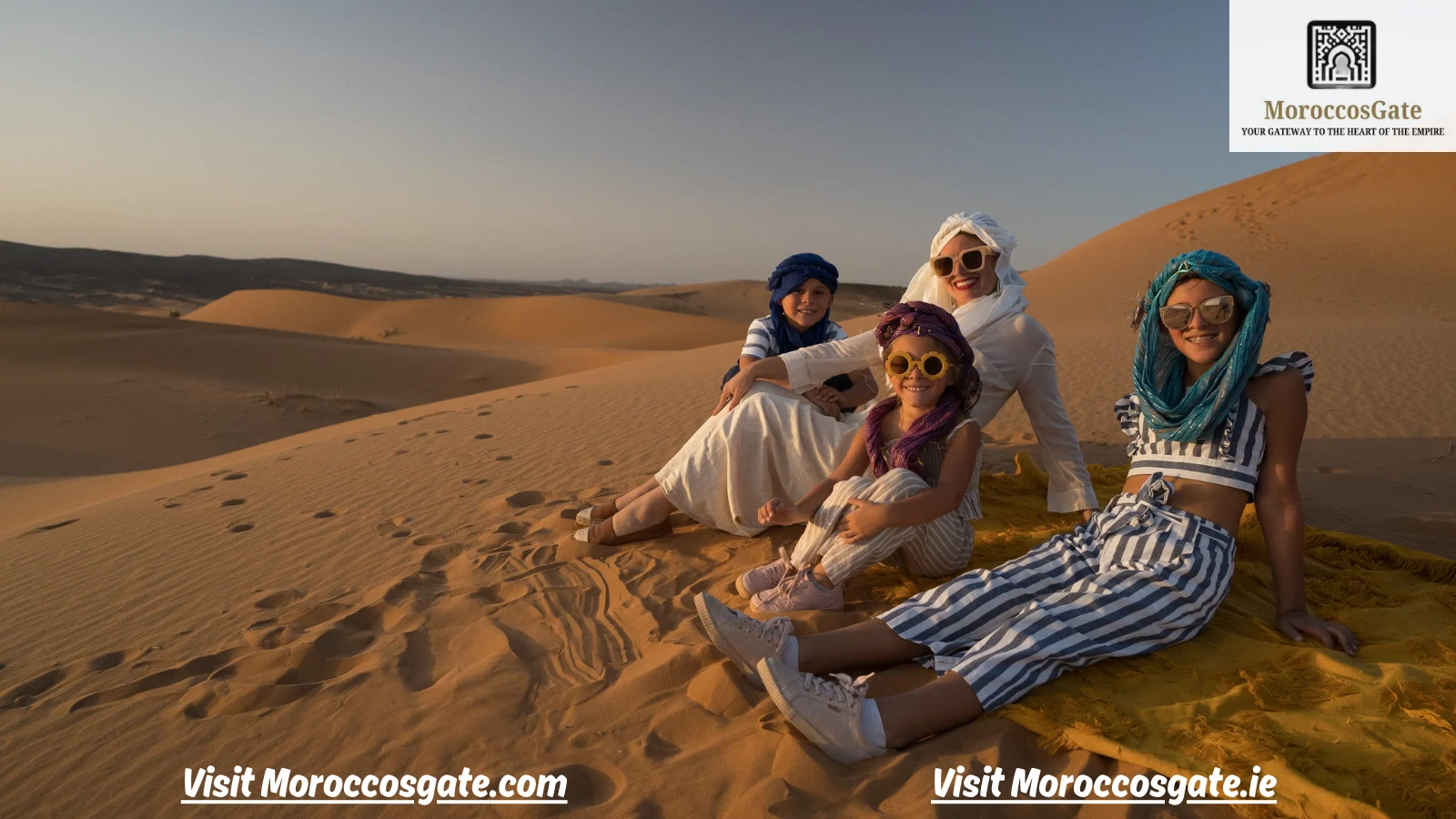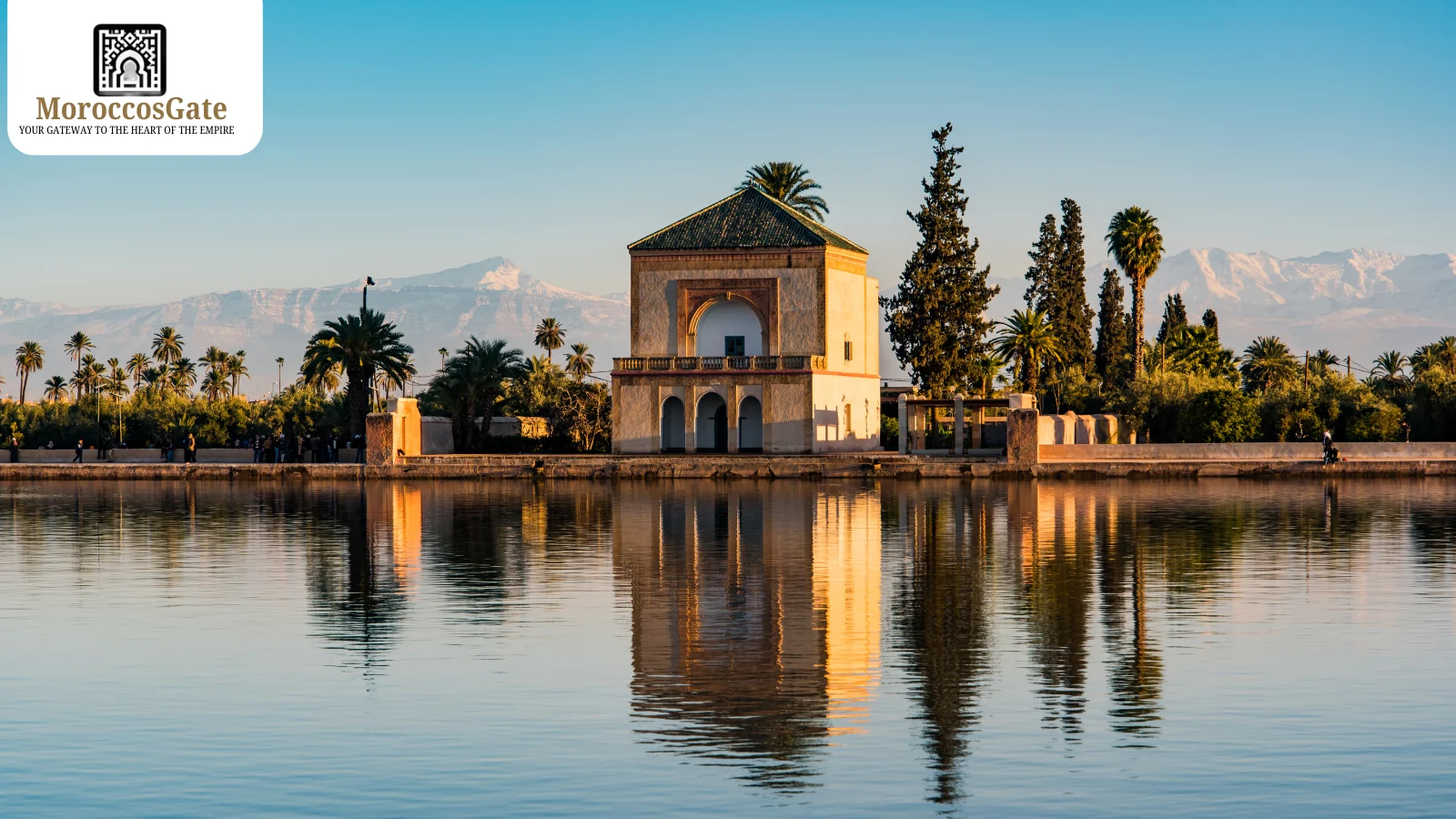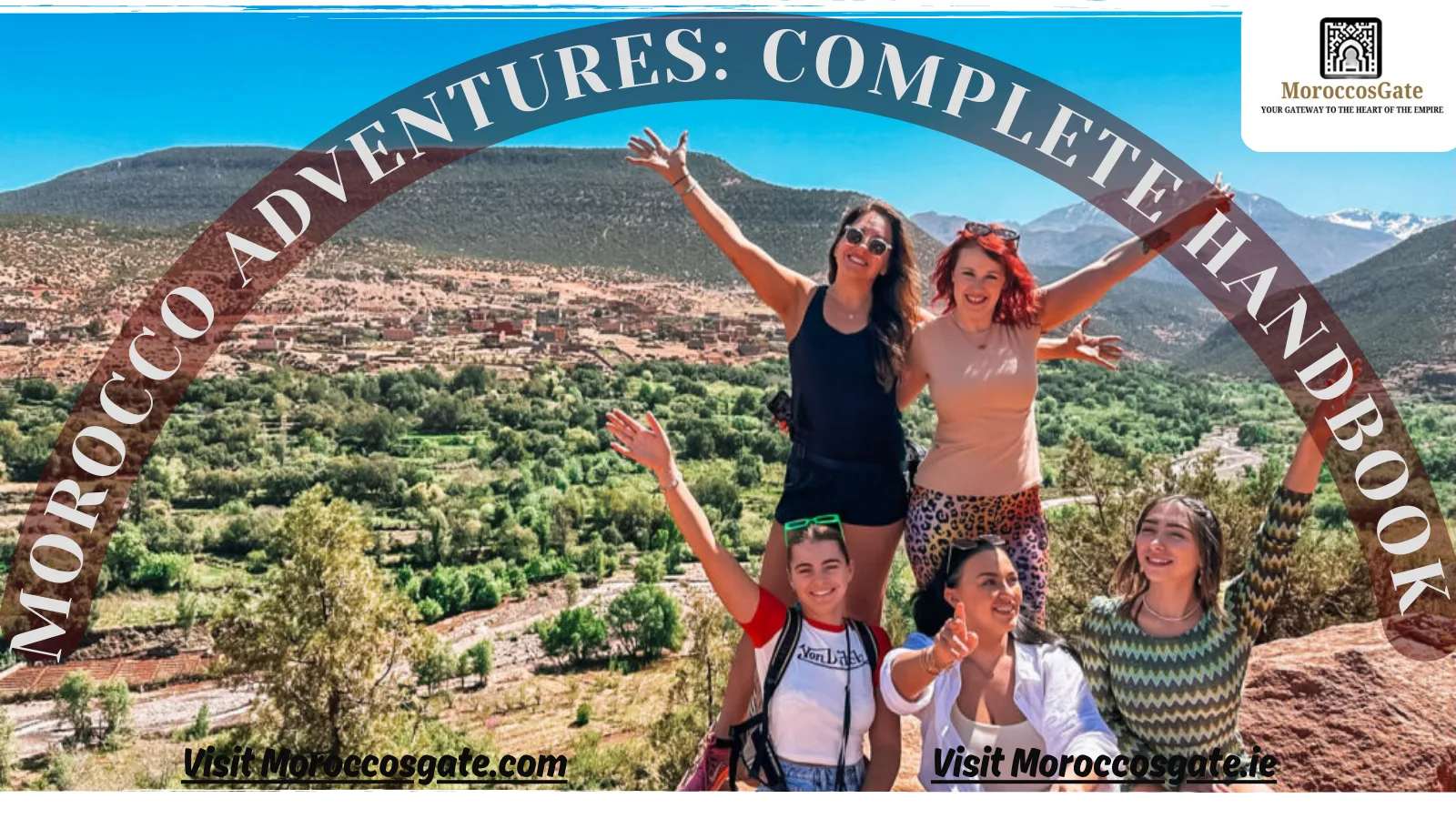Morocco Travel Stories: A Tapestry of Colors, Sounds, and Souls
The First Step into Marrakech: A Sensory Overload
The moment I stepped off the plane in Marrakech, the air enveloped me like a warm embrace, thick with the scent of spices and sun-baked earth. It was my first time in Morocco, and, frankly, I wasn’t prepared for the sensory onslaught. For instance, Menara Airport buzzed with activity—people in vibrant clothing darted about, their voices overlapping in Arabic, French, and snippets of English. Meanwhile, the distant hum of the city pulsed with possibility. I grabbed my worn backpack, adjusted my sunglasses, and stepped into the chaos.

The taxi ride to the medina was a whirlwind. My driver, Hassan, a wiry man with a grin that could light up a room, navigated the narrow streets with ease. As we sped along, he pointed out landmarks—a minaret piercing the sky, a market stall overflowing with oranges. However, I was too captivated by the blur of color outside to focus. Donkeys pulled carts piled high with goods, scooters weaved dangerously close, and pedestrians moved with a rhythm I couldn’t yet grasp.
Finding Serenity in a Riad
In the heart of the medina, I found my riad, a traditional guesthouse hidden behind an unassuming wooden door. The contrast was striking: outside, the world roared with life; inside, a serene courtyard bloomed with orange trees, a fountain gurgling softly. My host, Fatima, welcomed me with mint tea poured from a silver teapot, the steam carrying the scent of fresh herbs. “Welcome to Morocco,” she said, her eyes crinkling with warmth. Consequently, that first sip of tea—sweet, sharp, and impossibly refreshing—felt like a promise of the adventure ahead. (Morocco travel stories)
The Jemaa el-Fnaa square was my first real taste of Marrakech’s pulse. By day, it was a sprawling market where snake charmers performed, juice vendors squeezed oranges on the spot, and storytellers captivated crowds. At night, however, it transformed into a carnival of food stalls, their smoke curling into the sky, carrying the aroma of grilled lamb and cumin. For example, I wandered past musicians playing the guembri, their rhythms pulling me in. A henna artist grabbed my hand, insisting on painting a swirling design. “For good luck,” she said, her fingers deft and sure. I didn’t argue—I was already under Morocco’s spell.
Fez: A Labyrinth of History and Craft
From Marrakech, I took a train north to Fez, a city that felt like stepping into a medieval tapestry. The medina of Fez, a UNESCO World Heritage site, is a maze of over 9,000 alleys, some so narrow I had to turn sideways to pass. My guide, Youssef, a soft-spoken man with a passion for his city, led me through the chaos with ease. “Fez is alive,” he said, “but you must listen to its heartbeat.” Thus, I followed, eager to uncover its secrets.

The Art of the Chouara Tanneries
The tanneries of Chouara were my first stop, a sight both mesmerizing and overwhelming. From a terrace overlooking the ancient pits, I watched workers dye leather in vats of vibrant colors—turquoise, saffron, crimson. The smell was pungent, a mix of lime and natural dyes, but the sight was unforgettable: men knee-deep in dye, their hands stained with the colors of their craft. Youssef handed me a sprig of mint to hold under my nose. “It helps,” he said with a chuckle. As a result, I could focus on the beauty of the process. I bought a pair of leather slippers from a nearby shop, their softness a testament to the labor I’d just witnessed.
A Sanctuary of Knowledge
Fez is also a city of learning. For instance, the University of Al-Qarawiyyin, one of the oldest in the world, stood proudly in the medina. Its library, adorned with intricate tilework and carved wooden ceilings, felt like a sanctuary of knowledge. I stood in awe, imagining scholars poring over manuscripts centuries ago. Youssef shared stories of the university’s founder, Fatima al-Fihri, a woman whose vision shaped Fez’s intellectual legacy. Consequently, I felt Morocco’s history as a tapestry of resilience and ingenuity. (Morocco travel stories)
One evening, I stumbled upon a small café tucked in an alley. The owner, Karim, an elderly man with a warm smile, served me b’stilla, a savory-sweet pastry filled with pigeon and dusted with powdered sugar. As I savored the unexpected combination, Karim shared tales of his childhood in Fez, of festivals and family gatherings. “Food is our memory,” he said, his eyes distant. Thus, I left with a full stomach and a fuller heart, carrying his stories with me.
The Blue Streets of Chefchaouen
Next, I headed to Chefchaouen, a town nestled in the Rif Mountains, famous for its blue-washed streets. The journey was long, a bumpy bus ride through winding roads, but the first glimpse of Chefchaouen made it worthwhile. The town was a sea of blue—walls, doors, and even staircases painted in shades from cobalt to sky. For example, it felt like walking through a dream.

I stayed in a small guesthouse run by Amina, a woman with a laugh that echoed through the house. She explained that the blue was a tradition, though its origins were debated—some said it kept mosquitoes away, others that it symbolized the sky or Jewish heritage. “It doesn’t matter why,” Amina said, shrugging. “It’s beautiful, no?” I couldn’t disagree. Consequently, I settled into the town’s serene rhythm.
Days in Chefchaouen were slow and deliberate. I wandered the medina, camera in hand, capturing the way sunlight danced on the blue walls. Cats lounged on doorsteps, unbothered by passersby. In the main square, I sipped mint tea at Café Aladdin, watching old men play cards and children chase each other. The pace, unlike Marrakech’s frenzy, encouraged me to slow down and breathe deeper.
A View from the Spanish Mosque
One afternoon, I hiked to the Spanish Mosque, a small ruin overlooking Chefchaouen. The view was breathtaking—the town’s blue heart cradled by green hills, the call to prayer echoing in the distance. I met a local artist, Khalid, sketching the scene. He showed me his vibrant paintings, which captured the town’s soul. “Blue is peace,” he said, pointing to his canvas. As a result, I bought a small painting, a piece of Chefchaouen to carry home.
Essaouira: The Call of the Coast
From the mountains, I traveled to Essaouira, a coastal town where the Atlantic Ocean meets Morocco’s vibrant culture. The bus ride was filled with anticipation, as the landscape shifted from rugged hills to the open sea. Essaouira’s medina, another UNESCO site, was a maze of whitewashed walls and blue shutters, with seagulls circling overhead and the salty breeze cutting through the heat. (Morocco travel stories)

The port was my first stop, where fishermen hauled in their catch, their nets glistening with silver fish. Their shouts mingled with the cries of gulls, creating a lively symphony. For instance, a vendor offered me grilled sardines, fresh from the boat, served with a wedge of lemon and bread. The simplicity was perfection—the fish flaky, the lemon sharp, the bread soaking up the juices.
The Ramparts and Gnaoua Rhythms
Essaouira’s ramparts, built by the Portuguese centuries ago, were a highlight. I walked along the Skala de la Ville, where ancient cannons faced the ocean, their iron rusted by time and salt. The waves crashed below, a reminder of nature’s power. A young couple, tourists like me, asked me to take their photo against the sea. “This place feels alive,” the woman said, her hair whipping in the wind. I nodded, feeling it too.
The medina was a treasure trove of art and music. Essaouira is known for its Gnaoua music, a rhythmic blend of African, Berber, and Arabic influences. I attended a performance at a small venue, where musicians played the sintir, their voices rising in hypnotic chants. The crowd swayed, some clapping, others dancing. Consequently, I closed my eyes, letting the music wash over me, feeling connected to something ancient and universal.
The Desert’s Embrace: A Night Under the Stars
No trip to Morocco would be complete without a journey into the desert. I joined a small group for a trek to the Erg Chebbi dunes, a landscape of golden waves stretching into eternity. Our guide, Mohammed, a Berber with quiet wisdom, led us on camels, their swaying gait surprisingly soothing. I named mine Omar, laughing as he snorted at me. (Morocco travel stories)
The desert was humbling. The dunes towered above us, their curves sculpted by the wind. As the sun set, the sand glowed orange, then purple, then deep blue. We reached our camp—a cluster of tents with woven rugs and lanterns. Dinner was tagine, slow-cooked lamb with apricots and almonds, served under a sky bursting with stars. Mohammed shared stories of his ancestors, nomads who navigated by those stars. “The desert teaches patience,” he said, his voice soft against the silence.
That night, I lay on a blanket outside my tent, staring at the Milky Way. The vastness was overwhelming, yet comforting. A fellow traveler, Clara from Spain, joined me. “It’s like the universe is whispering,” she said. We stayed there for hours, sharing stories of our travels, the desert holding us in its quiet embrace.
Tangier: Where Continents Collide
My final stop was Tangier, a city where Africa and Europe seem to meet. The ferry from Spain brought me to a port alive with languages and cultures. Tangier felt different—grittier, more cosmopolitan, with a history of artists and writers drawn to its edge-of-the-world vibe. (Morocco travel stories)

The Kasbah was my first exploration, a fortress overlooking the Strait of Gibraltar. I wandered its narrow streets, past houses painted in bright colors, their doors adorned with intricate knockers. At the Kasbah Museum, I marveled at artifacts from Morocco’s past—mosaics, textiles, and pottery that told stories of empires and trade routes. A curator, an older woman with a sharp wit, pointed out a Phoenician necklace. “Tangier has always been a crossroads,” she said. As a result, I felt the city’s pulse as a meeting point of worlds.
A Taste of Tangier’s Soul
The medina was a sensory feast, with spice vendors calling out, their stalls piled high with saffron, paprika, and cumin. I bought a small bag of ras el hanout, a spice blend that smelled like Morocco itself. At Café Hafa, perched on a cliff overlooking the sea, I sipped mint tea and imagined the writers who once sat here—Bowles, Burroughs, Kerouac. The view was timeless, the water shimmering under the afternoon sun.
One evening, I met a local musician, Jamal, at a small bar. He played the oud, its notes weaving stories of love and loss. Over glasses of sweet tea, he shared Tangier’s role as a haven for dreamers. “This city doesn’t judge,” he said. “It just is.” Consequently, I left Tangier feeling I’d glimpsed something raw and real, a city that held space for every kind of story.
Reflections on Morocco’s Soul
Morocco wasn’t just a destination; it was a journey into a world both ancient and alive. Each city had its own rhythm—Marrakech’s frenetic energy, Fez’s scholarly depth, Chefchaouen’s serene beauty, Essaouira’s coastal charm, the desert’s quiet wisdom, and Tangier’s eclectic soul. For instance, the people I met—Fatima, Youssef, Amina, Mohammed, Jamal—wove their stories into mine, their warmth leaving a mark on my heart. (Morocco travel stories)
The food was a revelation. From tagines that melted in my mouth to b’stilla’s surprising sweetness, every bite connected me to Morocco’s history. The markets, with their riot of colors and smells, reminded me of the country’s vibrant present. Moreover, the landscapes—from mountains to dunes to the sea—felt like a love letter from the earth itself.
As I boarded my flight home, my backpack heavier with souvenirs and my mind brimming with memories, I realized Morocco had changed me. It taught me to slow down, to listen, to savor. Ultimately, it showed me that travel isn’t just about seeing new places—it’s about feeling them, living them, carrying their stories with you. Morocco’s soul, in all its chaotic, beautiful glory, will stay with me forever.
Limited offer Skechers DE – Father’s Day Promo 2025 – 20% auf ausgewählte herren-Styles*





